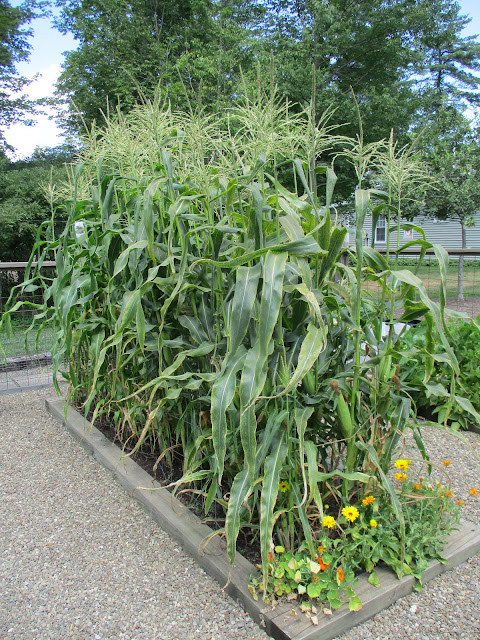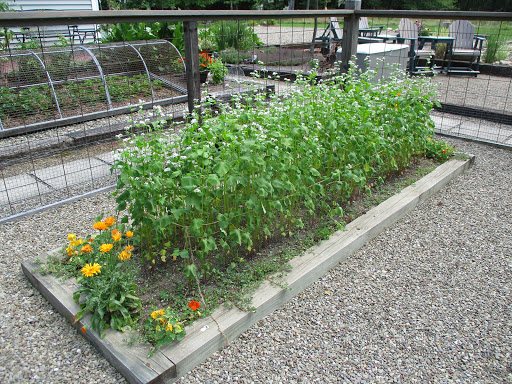When the garden is past its prime and things are coming out and beds are emptying I start to feel as though I should get started on all of the cutting and dividing to be done before leaf season starts. There are still plenty of things growing and many weeks to enjoy good weather. I don't want to get too far ahead of myself.
I have some nice Buckwheat going and the pole beans
and third planting of bush beans are thriving. While we have been eating fresh beans for weeks from earlier plantings I'm looking forward to getting a good harvest from these to fill the freezer.
The tomato plants are still going strong. Every few weeks I have to trim out diseased leaves and spent stems but these plants look pretty darn good for the end of August
This weekend we got one chore done that was weighing heavy on my mind. The first two beds of Buckwheat were going to seed and starting to flop over in the wind and rain. I cut them back and covered the bed with several inches of compost made from last year's perennial cut back. I didn't bother to sift it because it was quite light and fluffy and I know I will be getting buckwheat volunteers over the next few weeks so I will rake those in as they come up and the additional raking will break up whatever clumps are left in the compost.
We also cut the corn stalks from both beds. Now I have to pull the roots out before I add compost. At least the beds aren't in need of weeding.
We put both the buckwheat stalks and corn stalks through the chipper shredder which worked just great. I now have compost in several stages. Far left is the pile from the day lilies four weeks ago, the small pile just to the left of the wheelbarrow is what is left of the finished compost from last fall and the fresh green pile is from the corn and buckwheat.
I don't really like canning tomatoes. Pickles - yes, I actually kind of enjoy that. But tomatoes are a lot of work for something I don't use a lot of. I planted only four tomato plants. Two of them aren't really producing much at the moment, but the two that are producing buried me in tomatoes this past week. Almost a dozen one and a half pound fruit from the Pineapple plant alone. If it weren't for the fact that my husband is enthusiastic about canning things, I wouldn't have bothered. I would have hid the extra tomatoes. I mixed the yellow and red together since there is no circumstance where I would want to make chili out of yellow tomatoes alone.
Four quart jars is what fits in the turkey fryer. I canned the perfect tomatoes, and that left me with too many cracked or under ripe tomatoes which I picked this weekend to keep them from splitting even more in the rain.
Tomato season is far from over.
There are still a dozen or more large fruit in various stages
As a parting shot, here is a picture of my Clematis Shrub. This is the first year in about five years running that I've successfully defended it from the deer which usually nibble back the earliest buds. So it is big and beautiful and starting to smother the primroses on either side. So I will cut some root divisions out from the edges and add this to the new planting area by the deck.
Speaking of Clematis.
The vine I cut back a few weeks ago is back and even had buds on it.
Time for a second season



























































